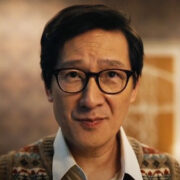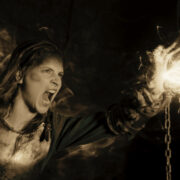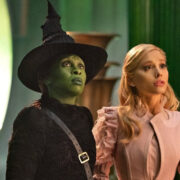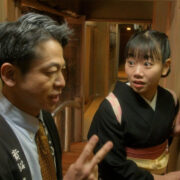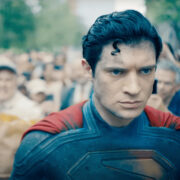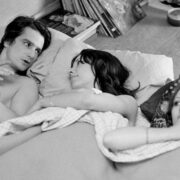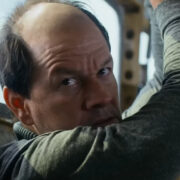Fantasia Film Festival: “It’s like you want to make something that feels beautiful, and not completely grounded in reality, without it feeling absurd.” Interview With Co-Writer/Director Theodore Schaefer For GIVING BIRTH TO A BUTTERFLY
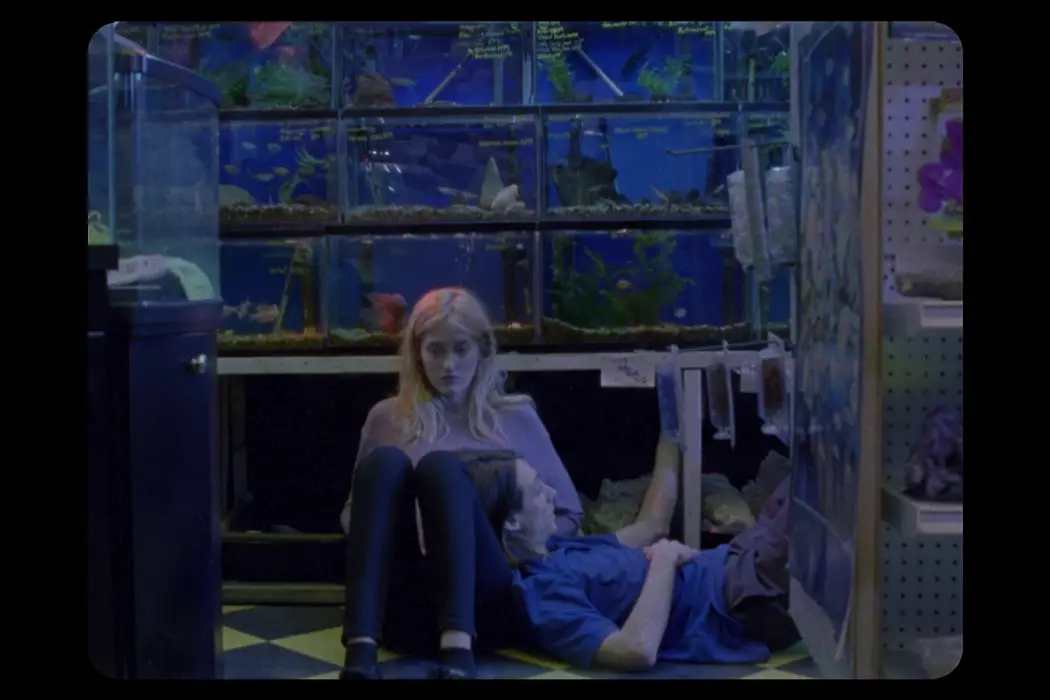
Kristy Strouse is the Owner/Editor in Chief of Film Inquiry,…
Giving Birth to a Butterfly, which premiered at Fantasia Film Festival this year, shows Theodore Schaefer‘s skill in delivering an artful vision, with a thought-provoking tale.
I was able to speak with the co-writer/director about the inspirations and meanings behind the film, his intentions aesthetically, casting, and much more!
This interview has been edited for clarity.
This is Kristy Strouse with Film Inquiry. I really enjoyed the film. So thank you for taking the time to speak with me today. Congrats on the film, and having its premiere at Fantasia. That’s exciting. Perfect place for it!
Theodore Schaefer: Yeah, I think so too. It’s been exciting, and they’ve just been such a great team.
There’s a lot going on within this film, where did the initial seed come from?
Theodore Schaefer: Well, the initial seed actually was many years ago. I sort of followed a secret shopper scam, which resulted in mailing me a check that I was supposed to deposit. I was like, how does this make any sense? Because it’s obviously a big check, which apparently banks, they sometimes take two weeks to catch it, and they wanted you to wire money to the Philippines. But there was a return address on the envelope. And I looked it up, and it was a residential house in Kentucky. That kind of sat with me for a while. And Patrick and I, my writing partner, Patrick Lawler, we’ve been working together for a few years, and we were looking for something new. And I was like, well, I have this idea. And we liked the idea of identity theft, and the idea of identity, and those sort of coexisting, as your identity is literally stolen. So that was just sort of a kickoff point.
Interesting! How did it evolve into the final script? Like how long did you work on it?
Theodore Schaefer: It probably took about a year to get it to the place where we were really happy with it, we usually write drafts pretty quickly. The hardest thing is like scheduling our two selves because we write remotely. He lives up in Syracuse, and he’s a professor. So, we just try to get as much time in the week as possible. And it’s actually nice. I think probably though, it was about a year before we were like, yeah, this is ready for us to make!
So, you mentioned the idea of having your identity stolen, but also the idea of identity. And I think this film definitely dabbles in a lot of philosophical elements, and is very poetic at times as well. Can you talk more about what you were going for with that? What were you trying to express with this story?
Theodore Schaefer: I mean, I think, well, Patrick is a poet, and that was part of it.
Oh! That makes sense!
Theodore Schaefer: The first thing we wrote together was about his life. He’s about in his late 60s, early 70s. So, we wrote a book, or a story based on a book that he wrote about his life. But yeah, I just love I mean… I love poetry and I think it is sort of innately poetic because of that. But, we were both interested in the idea of how identity is shaped and how it’s shaped by the people in situations around you.
We wanted to explore that. In fact, it is such a great vessel, because it’s somebody who is stuck. And the thing that shapes them is their identity literally being stolen. So that was the initial kind of insight, but it’s also a lot about the American dream. You have a family where every character in their own way is trying to create some sort of their version of the American dream and achieve it. So, they’re all sort of diluted in various ways. I think, although it’s an exaggeration, it’s very true to my life.

I love the title. I think, you know, it gives the idea of transformation and metamorphosis. I was just curious, was that always going to be the title?
Theodore Schaefer: Yeah, well, it’s an allusion to a poem by Mina Loy. The actual line is “We might have given birth to a butterfly with the Daily News, printed in blood on its wings.”
That’s beautiful! And just a little too long for a title. [laughs]
Theodore Schaefer: Yes, and when we were writing, Patrick was doing a presentation on Mina Loy. She was a poet in the early 1900s, a futurist, like incredible, really incredible. So as we were writing this, he was doing all this research on her and was like, I mean… she’s incredible and came up with that title. And part of her poem is at the beginning of the film because it just felt, you know, there’s a lot of serendipity. I think when you write stuff that’s more like the way we write it is a little intuitive, right? It’s trying to create something that’s a little closer to the subconscious. You’ll be reading something and be like, you know, actually, this kind of fits in! That was one of those experiences where Mina Loy was just like, this is almost what we’re missing from this film.
I love that! Something that really stands out about the film is its style, in both language and visuals. Can you talk a bit about the choice to shoot on 16 millimeter, the color/lighting, and those corners?
Theodore Schaefer: Yeah, I think it was just, it made a lot of sense from the beginning to shoot 16 even though the cost was difficult. I also think there’s something nice, especially as a person directory, you have to be really specific, you don’t have a lot of money. And, I learned on 16, when I went to film school, we shot everything on 16. There’s something nice about the sort of structure of that.
And we wanted the frame, we talked a lot about aspect ratio, and settled on rounded corners, were not initially the idea that we came to that because it’s a movie where people are sort of trapped inside of a certain area. But it’s also by making the vertical more important than the horizontal, it allows you to have a little more control over what you frame, and how you frame the characters. It creates this portrait, almost like a sitcom sort of situation which felt exactly kind of the world that we’re trying to create, that they live in.
It’s tough. It’s like you want to make something that feels beautiful, and not completely grounded in reality, without it feeling absurd. It’s a film about growth and rebirth, so it needed to have that sort of… softness. The whole film, and the language, everything about it feels like that. So that was obviously where we were looking. The films we were talking about, as references, were all very similarly slow and very precise in the way that they were shot and the lighting and the colors. They are all very kind of soft and muted. Pastels.
Yeah, I love the visuals! So what were some of those films or things that you kind of took inspiration from?
Theodore Schaefer: Visually, we talked a lot about Edward Yang and the works of Edward Yang, Terence Davies, and Chantal Akerman. A lot of people that use really kind of specific framing, softer lighting. Also that sort of off-kilter comedy like Jim Jarmusch as well and Kelly Reichardt. Actually, Meek’s Cutoff was a big inspiration in terms of the color scheme and also obviously shot and shot in 4:3 ratio.
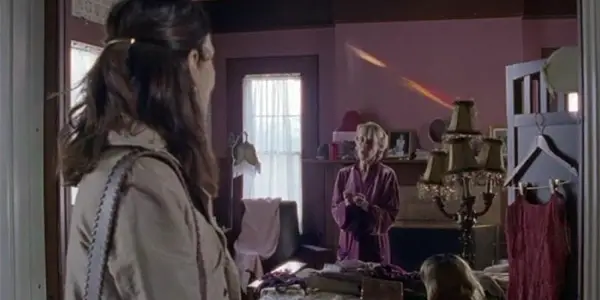
I can see that! So, I think everyone does a great job, well-cast, was it challenging to find the right fits?
Theodore Schaefer: Yeah, it was, it was kind of long, or it felt kind of long at first, and then as soon as it started to click, it clicked really quickly! Once we found Annie [Parisse], we were sort of looking for both at the same time. And we just met and completely got along right away. And it was like this person totally understands what we’re trying to do and understands the character. I think maybe a week or two later, we met Gus [Birney], and it was just, right. You want somebody who’s gonna be on the same but you want everyone kind of to be able to be on the same page because you’re going for something kind of specific. And we were just so lucky to find them and they were so in tune with what we were trying to do and brought so much to it! Including Gus bringing her mother, Annie bringing Paul [Sparks], her partner over so it like really did become the sort of family! So, that just made it feel exactly right. And suddenly the cast is casting itself. It was like, Oh, well, then this is obviously organic and feels like what was supposed to happen.
Amazing! Earlier you had mentioned the cost, were there challenges with finding shooting locations?
Theodore Schaefer: It was tough. Most of them are good family or friends. I mean, we shot near where I grew up. That was sort of always part of the idea. There is so much about a childhood memory that sort of makes sense within this film. So going to places that were literally in my childhood memory. I mean, Nina’s house, I don’t think we could have shot that anywhere else! I have been friends with that family for years, and they built that house! It’s such a fascinating house like it looks like a fairytale house, and they literally have a room behind a bookshelf! So, it was like, this just makes sense!
I got there and had forgotten that it was all green wallpaper, and I specifically didn’t want that green and yellow color scheme until you get to that location. And they weren’t before. And it was like, oh my god, this is naturally perfect! Patrick and I both grew up in New York State. And so it was, there’s a specific kind of feel and look to those kinds of homes. There were just so many wonderful people that were willing to help. And so that’s how the locations went, I just started going through my childhood basically, looked up these houses and found the perfect ones.
That’s really interesting! And I think helpful for indie filmmakers out there – use what you know! So, are you working on anything now, or just sort of enjoying this festival run?
Theodore Schaefer: We are enjoying the festival run, hoping to have that go on for a bit longer! But, Patrick and I have a script that we’re starting to get ready to hopefully make in the next year or two. It’s sort of this dream noir about a boxer and a dancer that we’re pretty excited about. And we feel like he’s getting to a really fun place. I also work at this company with my producing partner, Anna, and so we have a couple of films. So that’s good. It kind of keeps me busy and keeps me engaged and trying to help get other films made. Because that’s, I don’t know, if I could live the rest of my life just making movies and helping other people make movies that I think are worth making… that’d be great. That’s the dream!
That’s the dream! A perfect end quote! Thank you very much for taking the time to speak with me.
We want to thank Theodore Schaefer for taking the time to speak with us.
Does content like this matter to you?
Become a Member and support film journalism. Unlock access to all of Film Inquiry`s great articles. Join a community of like-minded readers who are passionate about cinema - get access to our private members Network, give back to independent filmmakers, and more.
Kristy Strouse is the Owner/Editor in Chief of Film Inquiry, writer, podcaster, and all around film and TV fanatic. She's also VP of Genomic Operations at Katch Data and is a member of The Online Association of Female Film Critics and The Hollywood Creative Alliance. She also has a horror website: Wonderfully Weird & Horrifying.


